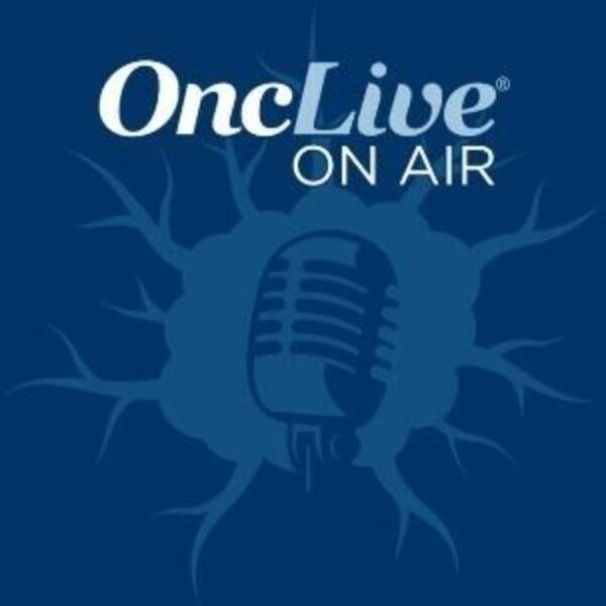Article
FDA Approval Sought for Brexucabtagene Autoleucel for Relapsed/Refractory B-Cell ALL
Author(s):
A supplement biologics license application has been submitted to the FDA for brexucabtagene autoleucel as a treatment for adult patients with relapsed/refractory B-cell precursor acute lymphoblastic leukemia.
Frank Neumann, MD, PhD

A supplement biologics license application (sBLA) has been submitted to the FDA for brexucabtagene autoleucel (Tecartus; formerly KTE-X19) as a treatment for adult patients with relapsed/refractory B-cell precursor acute lymphoblastic leukemia (ALL), according to Kite Pharma, the developer of the drug.1
If approved, brexucabtagene autoleucel would become the first and only chimeric antigen receptor (CAR) T-cell therapy approved for adults aged at least 18 years old with relapsed/refractory ALL.
“Tecartus has already begun to transform the outlook for many patients with relapsed or refractory mantle cell lymphoma, and we’re encouraged by the data we’ve seen in adult patients with relapsed or refractory ALL, as survival rates among these patients remain poor with the most commonly used therapeutic agents,” said Frank Neumann, MD, PhD, Kite’s global head of clinical development. “We are working closely with the FDA to progress our application and to bring the benefits of CAR T to patients with this particularly intractable leukemia.”
The FDA granted a breakthrough therapy designation to brexucabtagene autoleucel in 2017 for this setting in 2017.
In the ongoing international multicenter, registrational, phase 1/2 ZUMA-3 study (NCT02614066), investigators evaluated adult patients who were aged at least 18 years old with ALL whose disease is refractory to or has relapsed following standard systemic therapy or hematopoietic SCT. Patients with relapsed/refractory precursor B-cell ALL were aged 18 years or older with greater than 5% bone marrow blasts; had adequate renal, hepatic, and cardiac function; and had an ECOG performance status of 0 or 1. Patients with Philadelphia chromosome–positive disease, had prior allogeneic SCT in more than 100 days, received prior blinatumomab (Blincyto), extramedullary disease, Down syndrome were permitted.
Those with a history of central nervous system (CNS) disorder, CNS-2 disease with neurologic changes, or CNS-3 disease with or without neurologic changes; had active graft-vs-host disease; and had active fungal, bacterial, or viral infections were excluded from the trial.
Upon enrollment, patients received conditioning chemotherapy with fludarabine at 25 mg/m2 on days –4, –3, and –2, and cyclophosphamide at 900 mg/m2 on day –2. The starting dose for the CAR T-cell therapy was 2 x 106 cells/kg; patients were potentially enrolled at lower doses based on the overall safety profile, including 1 x 106 cells/kg and 0.5 x 106 cells/kg, before going onto the phase 2 portion of the trial.
The phase 1 portion endpoints were incidence of dose-limiting toxicities (DLTs) and safety; secondary end points were objective response rate (ORR), duration of response (DOR), relapse-free survival, minimal residual disease (MRD)–negativity rate, safety, and CAR T-cell levels. Responses were first assessed ay day 28 following CAR T-cell infusion.
End of phase 1 results from ZUMA-3 were presented at the 2019 ASCO Annual Meeting.2 In the study, 45 patients were treated with brexucabtagene autoleucel and were included in the safety analysis; 41 patients were evaluable for efficacy. The data cutoff date was September 27, 2018, and the median follow-up for efficacy was 16 months (range, 1-30) from brexucabtagene autoleucel dosing.
The median age was 46 years (range, 18-77), and 49% of patients were male; 33% of patients had an ECOG performance status of 0. Sixteen percent of patients had Philadelphia chromosome–positive disease and 67% had received 3 or more prior regimens; blinatumomab was previously given in 42% of patients and inotuzumab ozogamicin (Besponsa) in 13% of patients.
Patients were either primary refractory (36%), had first relapse with remission within 12 months (4%), or were relapsed/refractory post-allogeneic SCT (29%). Patients had a median 61 bone marrow blasts at screening, and a median of 70 bone marrow blasts preconditioning after bridging therapy.
Data showed that overall, after a minimum of 2 months of follow-up, the complete remission (CR; CR + CR with incomplete platelet recovery) rate was 68%. In the 2 x 106, 1 x 106, and 0.5 x 106 doses, the CR rates were 67%, 84%, and 50%, respectively.
Overall, 5% of patients had blast-free hypoplastic/aplastic bone marrow; the partial response rate was 2% and the progressive disease rate was 17%. The MRD-negativity rate was 100% among evaluable patients with any remission (n = 30), and the ORR was consistent across key covariates, including subsets of patients with refractory disease and who had underwent prior transplant.
When censored at transplant, at the 2 x 106 dose, the median DOR was 4.0 months; this numbers were 12.9 months and were not reached in the 1 x 106 and 0.5 x 106 doses, respectively. Of the 16 patients who achieved a CR at the 1 x 106 dose, 12 patients (75%) have ongoing responses.
When not censored at transplant, the median DOR was 4.0 months, not reached, and not reached at the 2 x 106, 1 x 106, and 0.5 x 106 doses, respectively. The median time to transplant was not available, 13 weeks, 9 weeks, and 11 weeks, respectively. Of the 6 patients who received transplant, 3 have ongoing remissions as of the data cutoff.
Additionally, although the sample size was limited, the median CAR T-cell expansion was similar between the 1 x 106 dose groups with the revised and original AE management. This dose was chosen as the recommended phase 2 dose in this setting.
Regarding safety, no DLTs were observed in patients who were evaluable for them (n = 3), and 2 patients experienced grade 5 AEs; one was due to multiorgan failure secondary to cytokine release syndrome (CRS) on day 6, and the other patient developed a stroke following infusion in the context of CRS and neurologic events on day 7. No patients experienced cerebral edema.
The phase 2 portion of ZUMA-3 has not yet read out.
In July 2020, the FDA granted an accelerated approval to brexucabtagene autoleucel for the treatment of patients with relapsed/refractory mantle cell lymphoma. Additionally, the product label for the drug has a Boxed Warning for CRS and neurologic toxicities. Brexucabtagene autoleucel is approved with a risk evaluation and mitigation strategy because of these adverse events.
References
- Kite submits supplemental biologics license application to U.S. Food And Drug Administration for Tecartus in adult patients with relapsed or refractory acute lymphoblastic leukemia. News release. Kite Pharma. Published April 1, 2021. Accessed April 2, 2021.
- Shah BD, Bishop MR, Oluwole OO, et al. End of phase I results of ZUMA-3, a phase 1/2 study of KTE-X19, anti-CD19 chimeric antigen receptor (CAR) T cell therapy, in adult patients (pts) with relapsed/refractory (R/R) acute lymphoblastic leukemia (ALL). J Clin Oncol. 2019;37(suppl; abstr 70060). doi:10.1200/JCO.2019.37.15_suppl.7006








